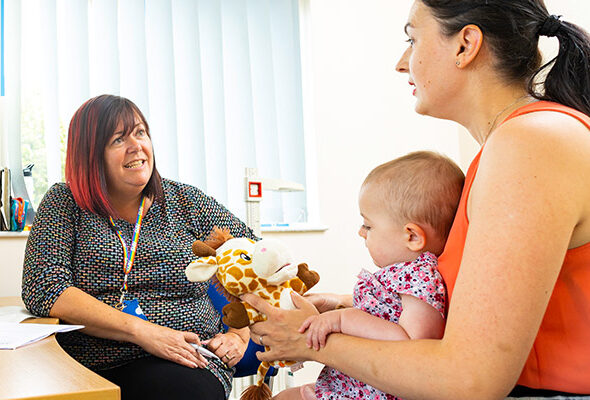Everyday moments create connections
A new health campaign is encouraging parents to use responsive feeding techniques with their baby. Our expert, Janet Farrington, Infant Feeding Programme Manager, explains more…
 When it comes to babies, there are few things which cause new parents more worry than feeding.
When it comes to babies, there are few things which cause new parents more worry than feeding.
Janet said: “Breastfeeding your baby meets their needs for comfort and nutrition all-in-one and has many benefits but this isn’t always an option for every family.
“Feeding your baby can feel quite overwhelming at first – whether you are breastfeeding, bottle-feeding or a combination of both. The Health Visiting Service supports parents however they choose to feed their baby to overcome any challenges they face.
“We’ve created a campaign for those parents who are bottle-feeding to help them recognise the signs their baby is hungry and when they’re full, and also how parents can use responsive bottle-feeding techniques rather than giving a set amount and following a strict routine. The key is to follow the baby’s lead.”
What is responsive feeding?
Responsive bottle-feeding recognises that feeds don’t just provide nutrition, but also offer love, comfort and reassurance between a parent and their child. A positive early bond lays the ground for children’s brain development.
Loving, secure relationships help build resilience which means our ability to cope with future challenges and recover from setbacks is improved.
Why should someone feed their baby responsively?
All babies are different and all go through stages of needing more or less milk. It’s easier to overfeed a bottle-fed baby, which, over time, can lead to them ignoring their own feelings of fullness, taking in more calories than they need and making it harder for them to recognise when they are full or regulate how much they eat.
We hope the campaign will help parents feel confident to let their baby take the lead to say how much milk they need and also highlight that every day moments like feeds, can be a great chance to connect with and build a bond with their child.
How can I tell when my baby is hungry or full?
 Your baby will show you signs before they start to cry:
Your baby will show you signs before they start to cry:
- sticking out their tongue
- smacking their lips
- sucking on their fists
- turning their head to find milk.
As your baby starts to feel full you will notice they:
- don’t pull the teat or nipple back into their mouth
- start dribbling milk
- turn their head
- fall asleep.
Just like us, babies have different appetites and needs, so sometimes their feeds are longer and sometimes they are shorter. Being responsive to these signs, offering more if they seem hungry or stopping if they seem full helps a baby regulate their appetite.
How can I use feeds as a time to bond with my baby?
Talk to your baby gently and look into their eyes. This helps them to feel safe and loved. In the early weeks, keep feeding as a special time between you and your baby, to help them feel more secure.
Find the campaign at family.kentcht.nhs.uk/respondingtobaby




